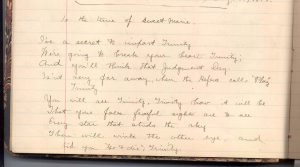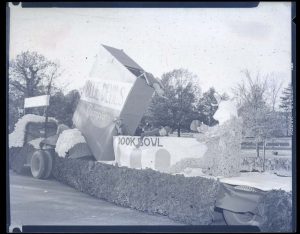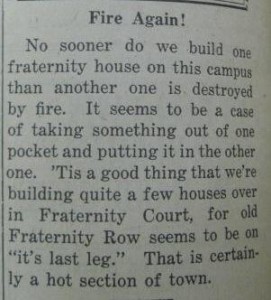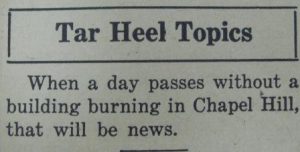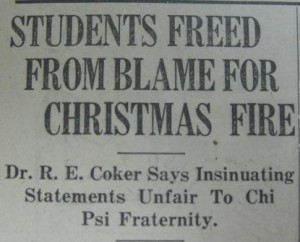In celebration of Women’s History Month, we here at University Archives can think of many women from the Carolina community to celebrate. There’s Cornelia Phillips Spencer, for example, who rang the bell in celebration of the university’s reopening in 1875. We also remember Mia Hamm, who led the women’s soccer team to four NCAA championships in the 1990s. Who don’t we remember then?
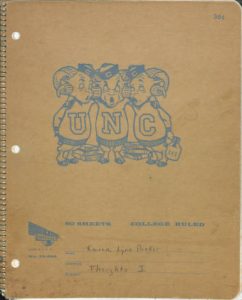
The cover of Karen Parker’s notebook from her time at UNC. (Karen L. Parker Diary, Letter and Clippings, #05275-z, The Southern Historical Collection.)
A woman you may not remember by name is Karen Lynn Parker. Karen Parker was the first African-American woman to attend and graduate from UNC Chapel Hill as an undergraduate student. In the fall of 1963, Karen Parker transferred to UNC from the Greensboro Women’s College and began her studies in journalism. In 1964, Parker was elected as vice president of the UNC Press Club. She also served as the editor of the UNC Journalist, the School of Journalism’s newspaper, in that year. Achievements aside, Karen Parker’s time at UNC was far from smooth sailing.
The first entry of her diary on November 5, 1963, began with her own reflections on the freedom marches. Her next diary entry on November 22 related her shock and sadness at the assassination of President Kennedy. On campus, she wrote that classes were called off and tests were cancelled. Even the Duke-Carolina game and the Beat Dook parade (which had been an annual event since 1950) were struck from the calendar. On November 24, Karen Parker wrote in her journal that she felt “insecure, unsafe” and that the “future looks quite uncertain.”
However uncertain the future looked, Parker took hold of the present. As part of her activism with the Congress of Racial Equality (CORE), she often spent time in jail. In her entry of December 18, she wrote: “On Saturday, the 14th, I decided to go to jail [….] We went to Leo’s, were arrested, and hauled to jail.” Leo’s was a restaurant in downtown Chapel Hill whose segregation policy Parker and others protested.
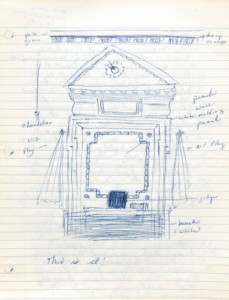
Drawing of the inside of the Orange County Superior Court in Hillsborough, NC, March 2, 1964. (Karen L. Parker Diary, Letter and Clippings, #05275-z, the Southern Historical Collection.)
As time wore on, Parker continued to demonstrate and protest against segregation with other students and members of CORE. As CORE was accused of communist leanings, and the university began to threaten student demonstrators with expulsion, Karen Parker felt her faith in Carolina waver as she wondered about the future. Though summoned before the Women’s Honor Council in early 1964, Karen Parker remained firm: “They were going to have to expel me because I wasn’t going to give up.”
And Karen Parker did not give up. She went on to graduate from UNC Chapel Hill in 1965 with a BA in Journalism. So, as we remember the women that have made Carolina great, we should not forget Karen Parker. As Eve Carson said, “it’s us—the student body—who make Carolina what it is.” Thank you, Karen, for being one of many who have made Carolina what it is today.
(Access the Finding Aid for the Karen L. Parker Diary, Letter, and Clippings here: http://www.lib.unc.edu/mss/inv/p/Parker,Karen_L.html.)

